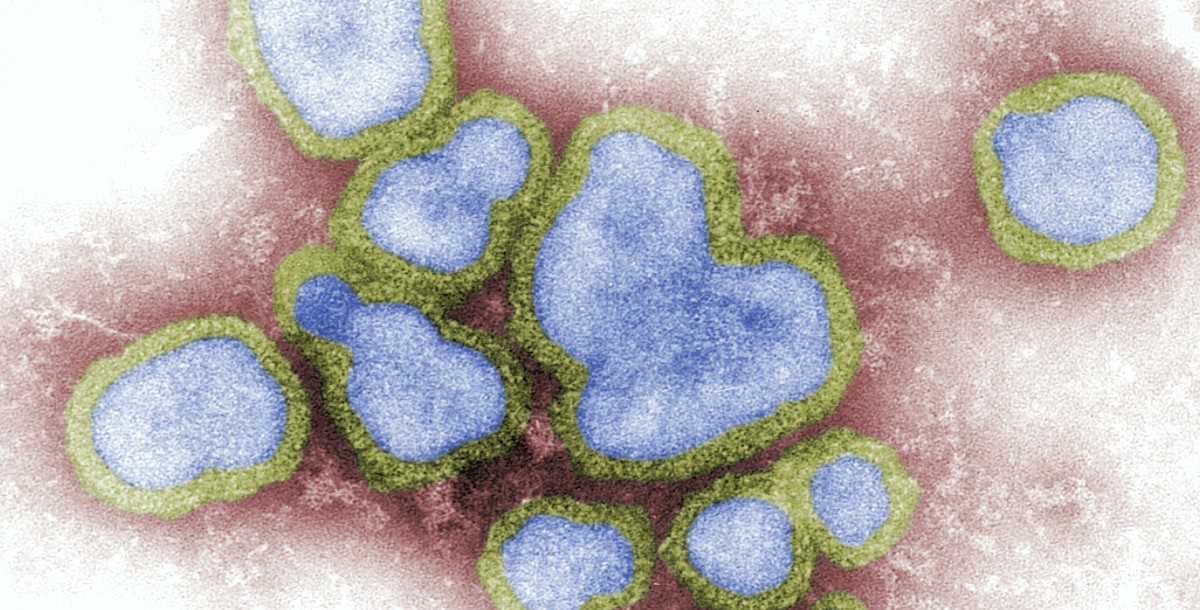Spanish Flu pandemic wasn’t caused by a meningitis vaccine

28 January 2022
What was claimed
The Spanish Flu wasn’t a flu virus, it was a bacteria that caused severe and lethal pneumonia.
Our verdict
The 1918 flu pandemic, also known as Spanish Flu, was caused by the influenza A H1N1 virus. There is evidence that many of the people who died in the pandemic may have had an additional bacterial pneumonia.
What was claimed
The Spanish Flu did not originate in Spain. It actually originated in Fort Riley, Kansas due to an experimental bacterial meningitis.
Our verdict
There continues to be a debate about where geographically the 1918 pandemic began, and there were some early cases documented in Fort Riley, Kansas. However, experts say there is “no way” that a meningitis vaccine could have contributed to starting a flu epidemic.
A video posted on Facebook makes a number of false claims about the 1918 Spanish Flu pandemic.
According to the Centers of Disease Control and Prevention, this pandemic is estimated to have infected over a third of the world’s population, and the World Health Organisation estimates that it caused between 20 and 50 million deaths worldwide.
The 1918 Spanish Flu pandemic was caused by a flu virus
The Facebook video claims that the 1918 flu pandemic was not caused by a flu virus and that instead the deaths were caused by lethal bacterial pneumonia infections. This is not true.
The 1918 flu pandemic was caused by the influenza A H1N1 virus, which has been extensively investigated and sequenced.
The video shares a screenshot of a 2008 press release on the US National Institute of Health’s website which includes the headline: “Bacterial Pneumonia Caused Most Deaths in 1918 Influenza Pandemic”.
The press release talks about an article which was published in the Journal of Infectious Diseases, with a different title: “Predominant Role of Bacterial Pneumonia as a Cause of Death in Pandemic Influenza: Implications for Pandemic Influenza Preparedness”. The study involved examination of 58 lung tissue samples and reviewed data from 8,398 autopsy investigations and found that in most cases there was evidence of secondary bacterial pneumonia. This is a bacterial pneumonia that occurred during or after the initial infection with flu.
It does not mean that the deaths were caused by bacterial infection alone, or that the influenza part of the illness did not exist.
The authors state that the combined work of multiple pathologists, spanning over 90 years, indicates that the vast majority of lung-related deaths from pandemic influenza viruses have resulted from “poorly understood interactions between the infecting virus and secondary infections due to bacteria”. They “speculate” that any influenza virus with the ability to spread to and damage the lower parts of the respiratory tract “could precipitate” potentially fatal bacterial pneumonia.
This means that the paper suggests that rather than bacterial pneumonias alone being the cause of many of the 1918 flu deaths, the pneumonias occurred because of the combination of recent or ongoing influenza infection and a susceptibility to bacterial pneumonias.
Dr Stephen Kissler, postdoctoral Fellow of Immunology and Infectious Diseases at Harvard T.H. Chan School of Public Health previously told Reuters that “people generally would not have died from the bacterial infection if their lungs have not already been attacked by this virus”. He added that the secondary bacterial infection (pneumonia) that follows “takes advantage of the damage that had been done by the virus.”.
Spanish Flu wasn’t caused by an experimental bacterial meningitis vaccine
There remains some debate about the geographical origins of the 1918 ‘Spanish’ Flu. Some historians do think that it could have started in America, while others believe it may have started in France, the UK, or China. It is believed that the illness became dubbed the ‘Spanish Flu’ because of the comparative lack of censorship in Spanish media at the time (compared to other nations who were involved in the First World War), which meant that it was the Spanish press which initially widely circulated news about it.
It’s reported that what are believed to be some of the first cases of the 1918 flu were recorded as early as March 1918 at the Camp Funston army training base in Fort Riley, Kansas.
According to a contemporary report in the Journal of Experimental medicine, there had been a ‘preliminary’ trial and wider use of a vaccine against meningitis following an outbreak in October and November 1917. However, there is no reason to believe that this was the cause of the later flu outbreak.
Dr Donald Burke, epidemiologist and former dean of the University of Pittsburgh Graduate School of Public Health previously told Reuters: “There would be no way that a meningitis vaccine could contribute to starting a flu epidemic”.
He went on to explain that meningitis is a different disease that is not closely related to influenza, and is caused by a bacteria rather than a virus. He added that they are “entirely different kinds of microorganisms that cause entirely different kinds of diseases.”
Dr Kissler also told Reuters that he saw no reason to conclude a vaccine, which was made with pre-existing, inactivated strains of meningitis bacteria from people who had previously been sick with meningitis, had “caused a major epidemic.”
Image courtesy of CDC, via unsplash.
This article is part of our work fact checking potentially false pictures, videos and stories on Facebook. You can read more about this—and find out how to report Facebook content—here. For the purposes of that scheme, we’ve rated this claim as false because the 1918 pandemic was a flu epidemic, and there’s no reason to believe it could have been started by a meningitis vaccine.
*** This article has been archived for your research. The original version from Full Fact can be found here ***


